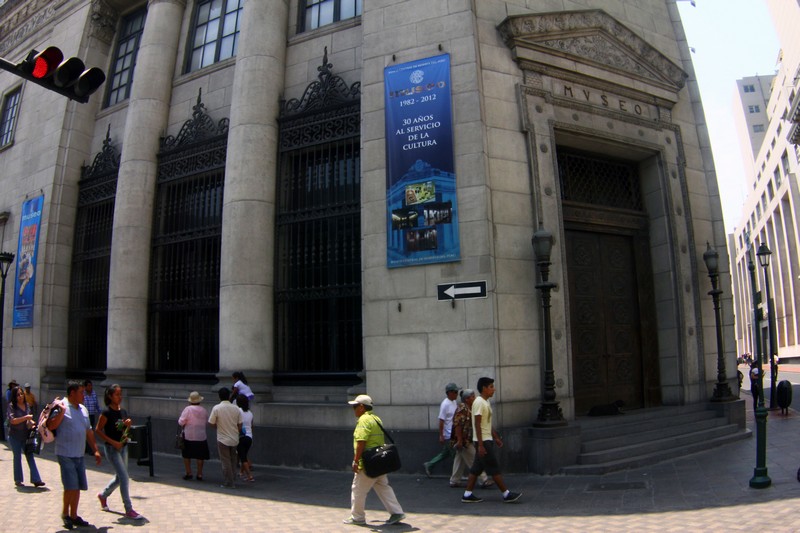Art, Culture and Entertainment

The museums are entities that have evolved over time. Today, visitors are increasingly seeking museums which are dynamic centers, where they can participate in what they see and enjoy what they learn. With this in mind, the National Museum of Chavin is currently running the Paracas Museum Project and the redevelopment of the exhibition area of the Museum of the Nation, whose work is aimed at integrating architecture and museology.
The museums of Peru represent a variety of categories, dictated by the nature of their collections: archeology, art, religion, science, general and specialized. The scope of each is influenced by national, regional and local peculiarities. All museums are open to the public, and dedicated to the development and understanding of people.
Peru's great cultural heritage are due to their; folklore, folk art, oral traditions, cuisine, ceremonies, magical-religious customs, legends, festivals, traditional medicine, social organizations, management technologies and languages.
This heritage, transmitted from generation to generation, is constantly recreated by communities and groups in response to their environment, their interaction with nature, with its history and with other human groups, which gives them a sense of identity and continuity, thus promoting respect for cultural diversity and human creativity.
FOLK ART

The continuity of folk art is linked to the family tradition. Parents transmit knowledge of techniques, forms, content and cultural meanings to their children. On the one hand, folk art provides beauty in response to economic needs, and on the other, a bond with the past and culture or community to which the artist belongs. These lessons are given from generation to generation, in a repetitive circle through families, and, as it is subject to the passage of time, transformations occur in materials and techniques, customs and modes of thought.
The true artist stays within the parameters of their cultural tradition, recreates its forms and adapts to new social needs of their environment. Thanks to this intergenerational transmission and renewal, Peru folk artists are still able to transform the raw material, impressing deep ancestral messages and values, while bringing beauty and wisdom to their work.
MUSIC AND DANCE
Since ancient times men and women in Peru were musicians and dancers, as evidenced by archaeological evidence of musical instruments, textiles and ceramics with singing scenes, performers and dancers. Indeed musical activities were not just mere entertainment but intrinsically intertwined with activities related to nature, society and the divinities.
The extreme expression of this entanglement came after the Spanish conquest: once lost to the military and in despair, the last mode of resistance the Spanish encountered was the natives' singing, music and dance. The latter was re-worked frantically, in what is known as Taki Onqoy dance. It was their last resort to recover their homes and lives, appealing to worship deities.
That native music and ceremony was very cleverly exploited by the evangelicans during the Viceroyalty, it was also enriched with new genres and musical instruments, especially strings, allowing the creation of dance and drama in theater under the new customs. The missionaries resorted to these artistic methods to legitimize the Patron festivities in every town and to meet the liturgical calendar. While native musical forms persisted, they eventually varied across regions, mixing their particular cultural roots.
From the Republican era creations grew more secular in nature, particularly those related to courtship, new customs or popular celebrations of political and military events, thereby enriching what is now known as folklore. The current diversity of musical expressions and recreations “dancísticas" arises from pre-Hispanic indigenous, regional genres inspired by European colonial and republican models, or more or less recent creations resulting from the increasing presence of modern media. The songs and dances describe nostalgia or longing, musical sounds show joy, euphoria, solemnity or sorrow, as well as dances to suit every social situation: they are there to animate religious celebrations, the tasks of work, rituals of war and various family parties.
PERUVIAN FOOD
Peruvian cuisine is based on several millennia of cultural creations from all the ethnic groups and cultures that have populated Peruvian territories, one of the oldest in the world.
In pre-Columbian Peru, food production had a magic-religious character which gives Peruvian cuisine, a deep symbolic and cultural flavor. Agricultural technologies and the management of water were highly developed by the ancient Peruvians, which led to the domestication of a huge variety of plants and animals, and the use of a large variety of wildlife found only in Peru, which gives its food originality, both in its ingredients and its combinations.
The American continent has provided the world with products of great importance in food and world cuisine such as potatoes, corn, quinoa, amaranth, chili, sweet potato, elm, oca, cassava, beans, the lima beans, peanuts, squash, tomatoes, maca, lucuma, cherimoya, among many others.
Peruvian cuisine is the fruit of biodiversity and a cultural diversity. This has allowed the development of regional cuisines that reflect the identity of the people and that, overall, for its originality, variety, aroma, texture and flavor, are recognized as some of the world's best culinary expressions.
And all of this, has made Peru a destination for culinary tourism.
FESTIVALS AND TRADITIONS
The manifestations of popular culture in Peru translate into numerous celebrations, processions, carnivals and rituals that take place throughout the country. These expressions have been part of the life of Peruvians since time immemorial. While some are ancient in origin, celebrating the Incan feast days of Pachamama, others are more modern festivals centering on modern activities such as motor cross races.
Events such as Corpus Christi in Cusco, the Virgen de la Candelaria in Puno, the celebrations of Holy Week in Ayacucho, the procession of the Lord of Miracles in Lima, the feast of the Virgen del Carmen in Paucartambo (Cusco), the pilgrimage to the Sanctuary of the Lord of Qoyllurit'i and the Feast of San Juan in the Amazon region, are some of the popular events that mark the Peruvian festival calendar.


